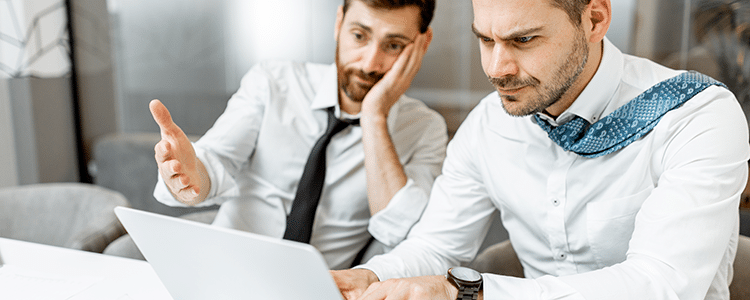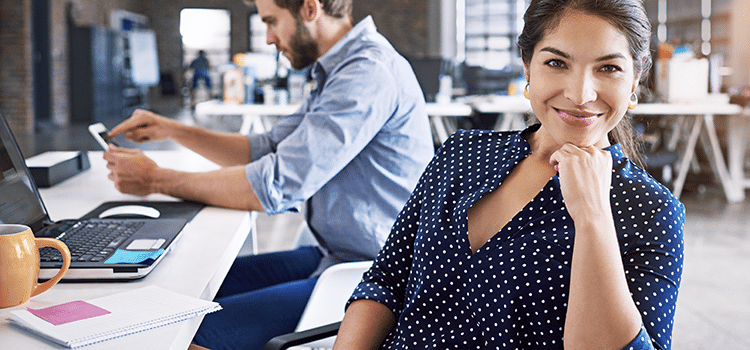When your ERP system goes live, your employees will rely on this shared, central database to access critical information. As such, it’s important to ensure this database contains accurate data.
The data migration process of moving data from your old systems onto a new platform can be quite complex, depending on the nature of your systems and data. In fact, you may encounter more than a few ERP data migration challenges.
Today, we’re sharing some of the most common issues that companies experience during this phase and detailing how to avoid them.
A Failed Payroll System Implementation
Panorama’s Expert Witness team was retained to provide a forensic analysis and written report to the court regarding the failed implementation of a major software developer’s ERP/payroll system.
6 Common ERP Data Migration Challenges
1. Redundant or Inaccurate Data
The data you migrate must be clean. It’s as simple as that.
Yet, it isn’t always so easy. Different departments often have their own versions of customer and product information. While the records might be mostly the same, they may not be identical.
For instance, your sales department might have an address for a particular customer that is formatted differently than the address that the project management team has.
If you start transferring data without checking the records, you’ll likely encounter these common data quality issues:
• Duplicated data
• Data loss
• Outdated product codes
• Data for clients, partners, or employees no longer associated with your company
• Critical Excel data missing from your system of record
By developing a data migration strategy as early as possible, you can ensure that your new system drives data-driving decision-making.
2. Not Enough Project Resources
It’s common for teams to reach this phase only to find that they’ve severely under-staffed the effort. Then, they must rush to find additional support, which delays the project even further.
Make sure you not only have the right people assigned to the task but that you’ve built enough room into your budget to cover the work required to completely extract, clean, and rationalize data.
Even if you’re just moving existing data from your legacy system to your new system, you should still be realistic about what this process will cost.
3. Relying on Outdated Validation Rules
When you first entered data into your system, you did so in accordance with the data governance that your organization had in place at the time. Are those standards still valid and accurate, or is it time to update them?
Blindly following validation rules without considering their validity could mean transferring data that you don’t need or can’t use.
Your project team should check to see if you need to change any data rules or create new ones. Then, they should make sure the ERP database uses those new validations.
4. Failing to Achieve Stakeholder Buy-In
Project stakeholders don’t always understand how important data migration is to the success of the project. If stakeholders are unwilling to devote the necessary resources, then this could undermine your entire effort.
Stakeholders can assume a number of different roles.
For example, you might rely on senior managers to diffuse conflicts around the best way to migrate certain data it. Senior managers can address varying opinions and help team members establish a consistent data migration strategy.
5. Neglecting to Comply With Industry Regulations
There are many different industry-specific regulations that dictate the ways organizations can store, manage, and use data. As you initiate the migration process, make sure you understand and comply with those standards.
For instance, HIPPA mandates require healthcare organizations to retain certain documents for a period of six years. Then, there are GDPR regulations that require organizations to expediently delete a customer’s personal data upon request.
6. Waiting Too Long for Validation and Testing
The weeks leading up to your go-live date should be spent fine-tuning the ERP software. You shouldn’t spend these last weeks performing data validation and testing.
These steps should be taken care of as early in the project as possible. That way, you have time to course-correct if your team finds any critical errors that require resolution.
We recommend asking users to validate data at every stage of this complex process, so you can make sure it’s accurate and complete.
Embracing AI for Smarter ERP Data Migration
As ERP systems become increasingly complex, it’s become more challenging to migrate data while ensuring its quality and consistency. However, artificial intelligence (AI) and machine learning technologies are revolutionizing the way businesses approach data migration.
Examples include:
- AI-Powered Data Cleansing: AI algorithms are capable of identifying and cleaning duplicate, incomplete, or outdated data more efficiently than manual processes. For instance, AI can learn to recognize variations in data (like different address formats) and standardize them without human intervention.
- Predictive Analysis: By analyzing historical data migration projects, AI can predict potential issues and bottlenecks in the migration process, allowing project teams to proactively address challenges before they escalate.
- Natural Language Processing (NLP): AI-driven NLP is used to interpret and categorize unstructured data, such as customer feedback or product descriptions, making it easier to migrate data from diverse sources into a structured ERP system.
- Automated Data Mapping: AI can assist in the complex task of mapping data fields from legacy systems to the new ERP platform. By learning from previous migrations, AI tools can suggest mappings, reducing the time and effort required while minimizing errors.
- Machine Learning for Compliance: Machine learning models are trained to understand and keep up with changing compliance requirements, ensuring that data migration strategies adhere to current laws and regulations.
Data Migration Doesn’t Have to Derail Your Project
ERP platforms are only as efficient as the data that drives them, so it’s important to perform data migration right the first time. When you know the ERP data migration challenges to avoid, you’ll be prepared to sidestep common roadblocks and avoid ERP failure.
Our ERP consultants are on hand to help you navigate data challenges and migration plans as early as possible. Contact us below for a free consultation.















